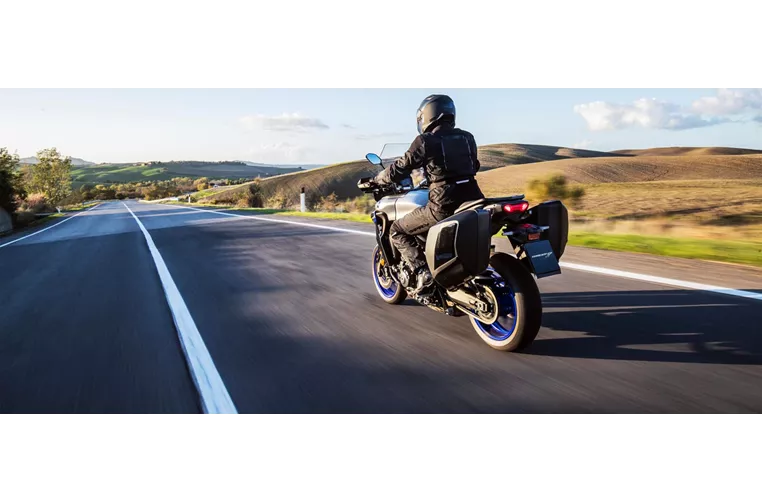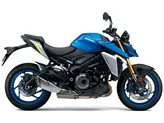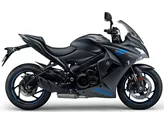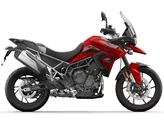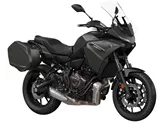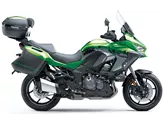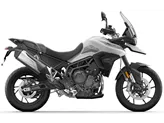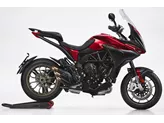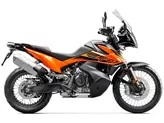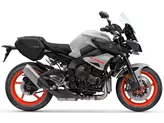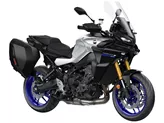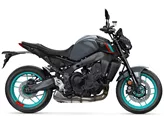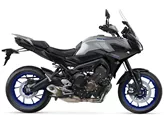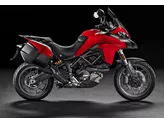Suzuki GSX-S1000F 2016 vs. Yamaha Tracer 9 GT 2021

Suzuki GSX-S1000F 2016
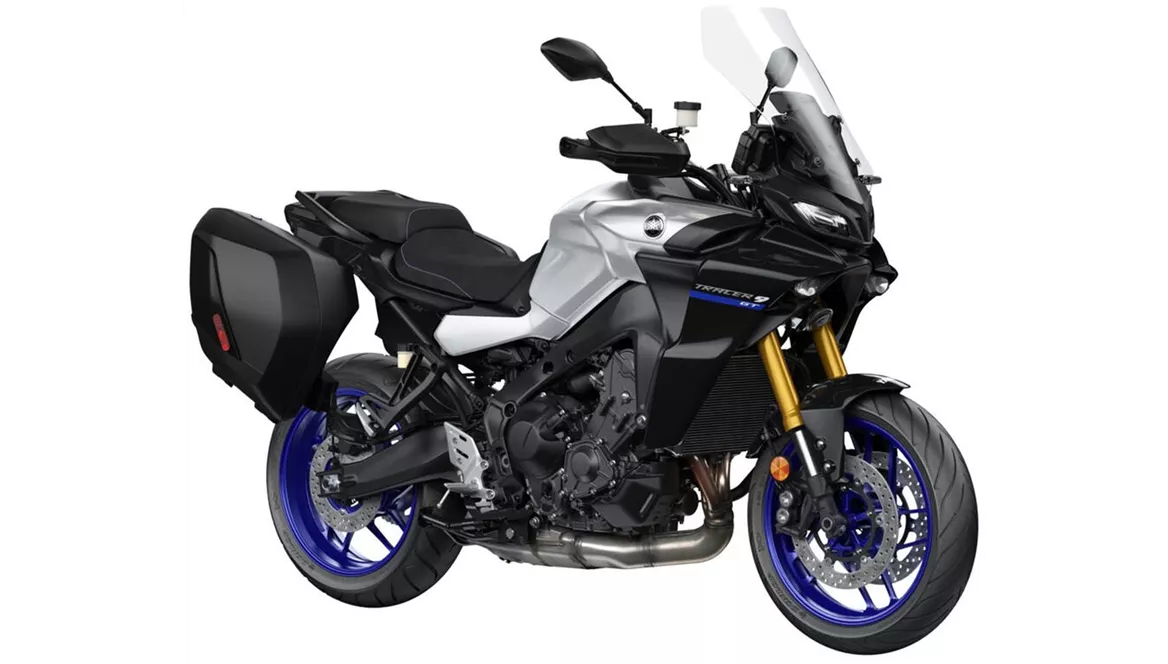
Yamaha Tracer 9 GT 2021
Vue d’ensemble - Suzuki GSX-S1000F 2016 vs Yamaha Tracer 9 GT 2021
When comparing the Suzuki GSX-S1000F model year 2016 and the Yamaha Tracer 9 GT model year 2021, it is important to consider their technical specifications and strengths and weaknesses.
Starting with the technical specifications, both motorcycles have an inline engine type and chain transmission. However, there are some differences in their engine power and torque. The Suzuki GSX-S1000F has a more powerful engine with 149 HP and 106 Nm of torque, while the Yamaha Tracer 9 GT has 119 HP and 93 Nm of torque. In terms of engine displacement, the Suzuki has a larger engine with 999 ccm compared to the Yamaha's 890 ccm.
In terms of suspension, both motorcycles have upside-down telescopic forks at the front and a monoshock at the rear. However, the Yamaha Tracer 9 GT has a slightly higher travel in both the front (130 mm) and rear (137 mm) suspension compared to the Suzuki GSX-S1000F's 120 mm and 130 mm respectively. Both motorcycles offer adjustment options for compression, preload, and rebound.

Suzuki GSX-S1000F 2016
When it comes to the chassis, both motorcycles have an aluminum frame with a twin tube design. This provides a strong and lightweight structure for better handling and stability.
In terms of brakes, both motorcycles have double disk brakes at the front. The Suzuki GSX-S1000F has larger diameter disks (310 mm) compared to the Yamaha Tracer 9 GT (298 mm). Both motorcycles also come with ABS as an advanced rider assistance system.
Moving on to the dimensions and weights, the Yamaha Tracer 9 GT has a slightly larger wheelbase (1500 mm) compared to the Suzuki GSX-S1000F (1460 mm). The seat height of the Yamaha is also slightly lower at 810 mm compared to the Suzuki's 815 mm. Both motorcycles have similar tire widths and diameters, with the Yamaha having a slightly narrower rear tire (180 mm) compared to the Suzuki (190 mm). The Yamaha Tracer 9 GT also has a larger fuel tank capacity at 19 liters compared to the Suzuki's 17 liters. In terms of weight, the Yamaha Tracer 9 GT is slightly heavier with a kerb weight of 220 kg compared to the Suzuki GSX-S1000F's 214 kg.
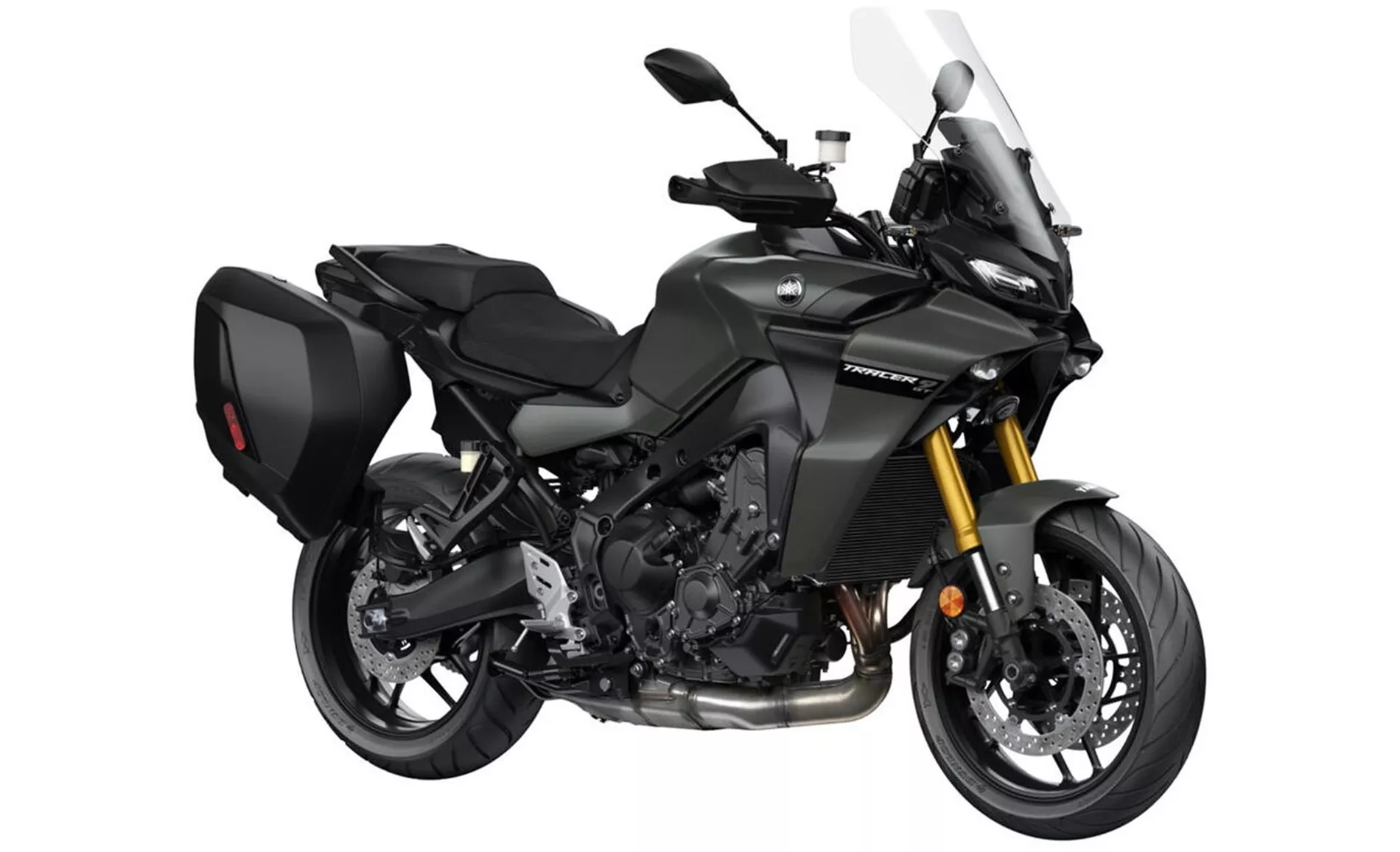
Yamaha Tracer 9 GT 2021
Now, let's consider the strengths and weaknesses of each motorcycle. The Suzuki GSX-S1000F 2016 is praised for its top exciting engine, strong Brembo brakes, great accessories, and fine traction control. However, it is criticized for having ABS that is not sporty enough, limited wind protection, and a slightly acute knee angle.
On the other hand, the Yamaha Tracer 9 GT 2021 is praised for its GT variant with great standard equipment, powerful engine with great tuning, easy handling, stable ride, comprehensive electronics package, great e-chassis, good wind protection, great pillion comfort, and long range. However, it is criticized for having a poorly readable and illogical display, stationary noise over 95 dB, a somewhat rough clutch, and moderate responsiveness.
In conclusion, both the Suzuki GSX-S1000F 2016 and the Yamaha Tracer 9 GT 2021 have their own strengths and weaknesses. The Suzuki offers a more powerful engine and better wind protection, while the Yamaha provides a more comprehensive electronics package and better pillion comfort. Ultimately, the choice between the two will depend on the rider's preferences and priorities.
Caractéristiques techniques Suzuki GSX-S1000F 2016 par rapport à Yamaha Tracer 9 GT 2021
Avantages et inconvénients en comparaison
Avantages et inconvénients en comparaison
Suzuki GSX-S1000F 2016
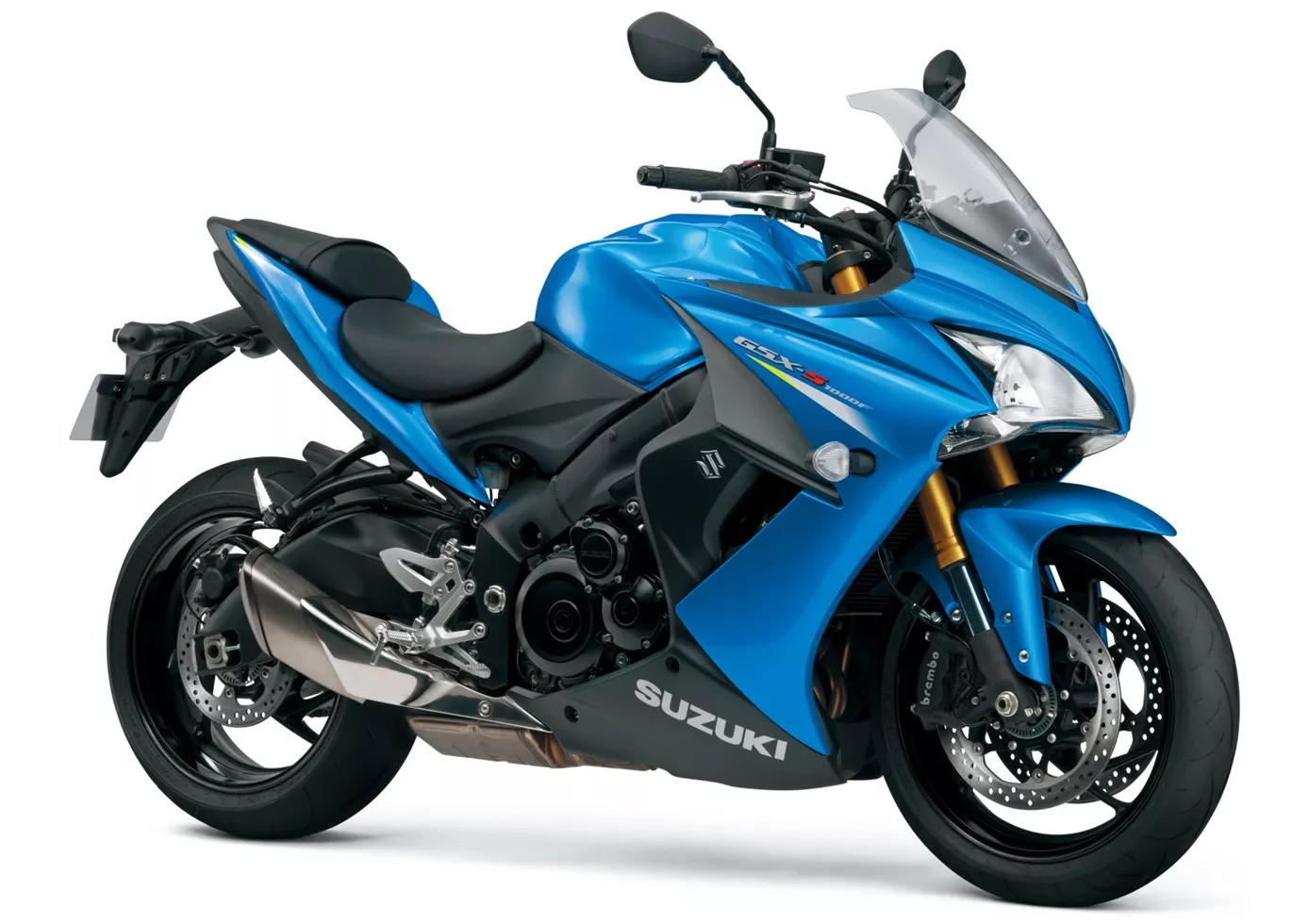
La GSX-S1000F est en fait une GSX-S1000 dont elle partage toute la géométrie, avec un peu de valeur ajoutée, mais qui est plutôt payante. Plus de stabilité à haute vitesse, plus de protection contre le vent et globalement plus compatible avec le caractère du moteur. Le moteur de la GSX-R est toujours aussi puissant, même s'il a un peu manqué de jus en bas. Suzuki offre ici aussi un excellent rapport qualité/prix.
Yamaha Tracer 9 GT 2021

Yamaha prouve de manière impressionnante à quel point une moto pratique peut être merveilleusement émotionnelle. On rit toujours malicieusement dans son casque lorsqu'on laisse le trois cylindres rauque sortir de sa laisse. Une moto réussie à tous les niveaux, qui peut remplacer la moitié d'un garage à moto. Malheureusement, l'essai avec l'écran original a échoué. Celui-ci est peu pratique et peu lisible.
Comparaison des prix Prix moyen du marché Suzuki GSX-S1000F vs Yamaha Tracer 9 GT
There are a few key differences between a Suzuki GSX-S1000F 2016 and a Yamaha Tracer 9 GT 2021. In terms of price, the actual average price of a Yamaha Tracer 9 GT 2021 is about 27% higher. A Suzuki GSX-S1000F 2016 experiences a loss of 400 USD in one year and 1,320 USD in two years of ownership. This is offset by a loss of 390 USD and 460 USD for a Yamaha Tracer 9 GT 2021. Compared to Yamaha Tracer 9 GT 2021 there are less Suzuki GSX-S1000F 2016 bikes available on the 1000PS.de Marketplace, specifically 9 compared to 25. It takes less time to sell a Yamaha Tracer 9 GT with 84 days compared to 140 days for the Suzuki GSX-S1000F. Since model year 2015 1000PS.de editors have written 10 reviews for the Suzuki GSX-S1000F and 17 reviews for the Yamaha Tracer 9 GT since model year 2021. The first review for the Suzuki GSX-S1000F was published on 9/30/2014 and now has more than 13,100 views. This compares to more than 61,200 views for the first review on Yamaha Tracer 9 GT published on 11/8/2020.

